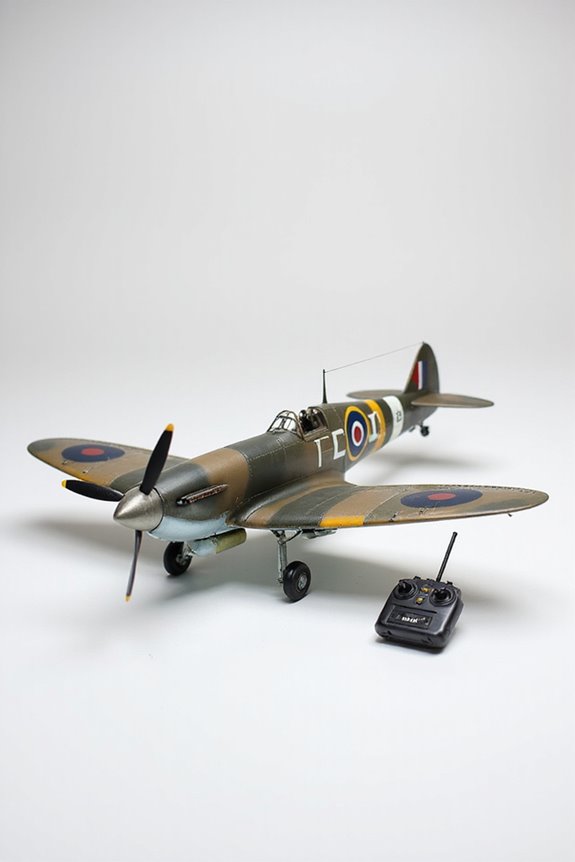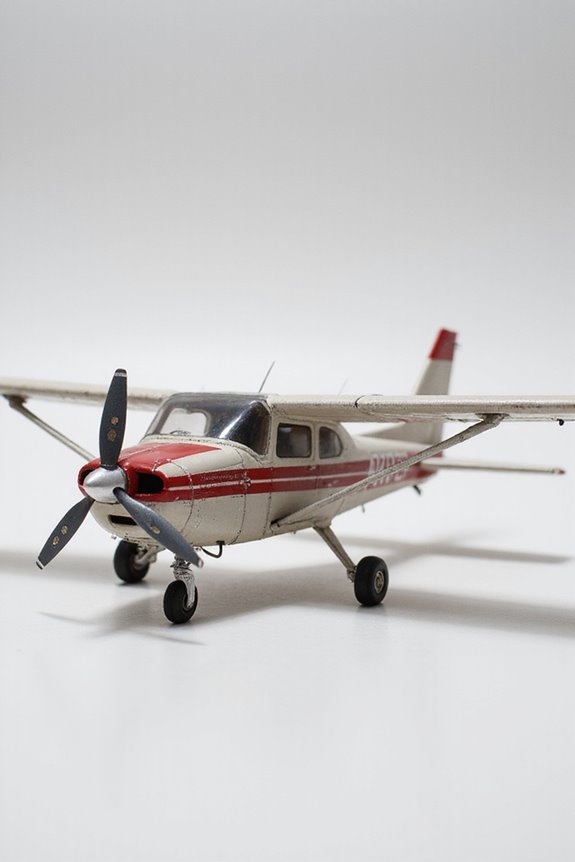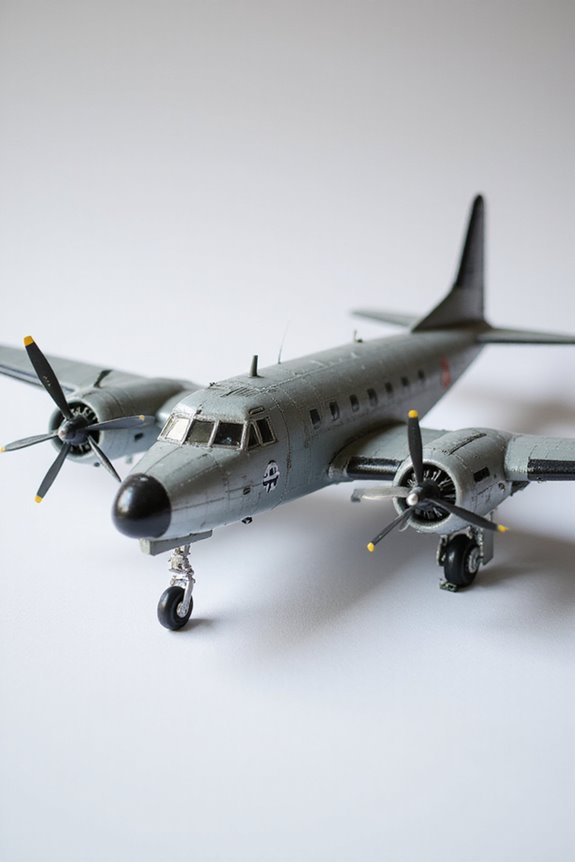Flying and static model aircraft are worlds apart. Flying models zoom through the skies using materials like lightweight balsa wood, while static models sit pretty, showcasing intricate details made from plastics and metals. While flying models need smart design for stability and control, static models focus on craftsmanship and historical accuracy. Think of it as the difference between a race car and a museum piece. Stick around, and we’ll explore more about these fascinating hobbies!
Key Takeaways
- Flying models are designed for actual flight, while static models are meant for display and artistic representation.
- Construction of flying models uses lightweight materials like balsa wood, whereas static models utilize heavier materials like plywood and metals.
- Flying models prioritize aerodynamics, stability, and control surfaces; static models focus on intricate detailing and craftsmanship.
- Scale ratios in static models enhance detail, while flying models emphasize performance over precise dimensions.
- Enthusiasts of flying models participate in competitions and airshows, unlike static model fans who emphasize historical accuracy and preservation.
Definition & Purpose
When we plunge into the world of model aircraft, it’s clear there are two main types: flying and static models. Flying models are our adventurous friends, designed for actual flight. They come in various flavors like free flight and radio control, giving us the thrill of piloting a mini airplane! These models rely on flight mechanics like stability and control surface effectiveness, often powered by tiny engines or electric motors.
On the other hand, static models are the elegant wallflowers, cherished for their detailed artistic representation. They’re perfect for display, giving us a closer look at history without the risk of a crash landing. While flying models are all about action, static models capture the beauty of aircraft design in a leisurely, appreciative way. Many static models, like those offered by Dumas, are known for their high-quality craftsmanship and intricate designs that appeal to collectors and enthusiasts alike.
Construction & Materials
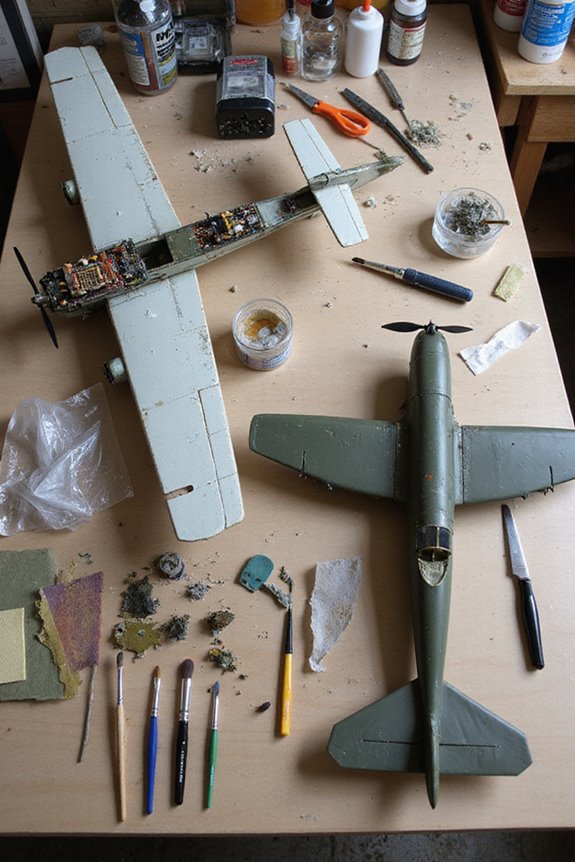
Flying and static model aircraft differ not just in how they’re performed but also in how they’re built. When it comes to material selection, flying models often rely on lightweight balsa wood and foam. These keep things nimble in the air, like a bird on a diet! In contrast, static models lean towards plywood, plastics, and metals for durability and detail without worrying about weight.
Our construction techniques vary, too. Flying models utilize hollow structures with reinforced frameworks. This helps them combat flight stresses—think of it as training for an aerial acrobat! Static models can be solid or semi-solid, allowing them to flaunt their heavier materials without a care. Ultimately, each type has its own charm, and we love them both! Additionally, flying models often incorporate high-grade materials that enhance performance and durability, making them suitable for various skill levels.
Aerodynamics & Stability
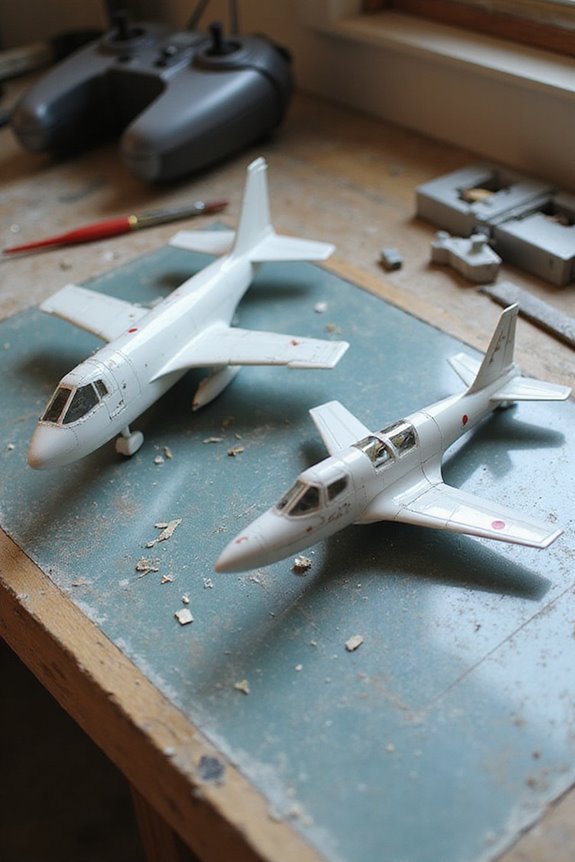
Understanding aerodynamics and stability is essential for anyone who loves model aircraft. When we fly, our models have to deal with aerodynamic forces, which dictate how they behave in the air. Flying models need positive static stability to help them recover from bumps in the air. Imagine trying to balance a pencil on your finger—it’s easier when it has a steady base!
Now let’s talk about dynamic behavior. This is all about how our models respond over time after disturbances. For a smooth flight, we rely on well-placed control surfaces, like ailerons and rudders. If we compromise too much on stability, we could end up in a wild spin—no thanks! Overall, understanding these principles keeps our models soaring, not plummeting! Additionally, the use of SAFE technology enhances stability and crash prevention, making it easier for beginners to fly confidently.
Scale & Detail
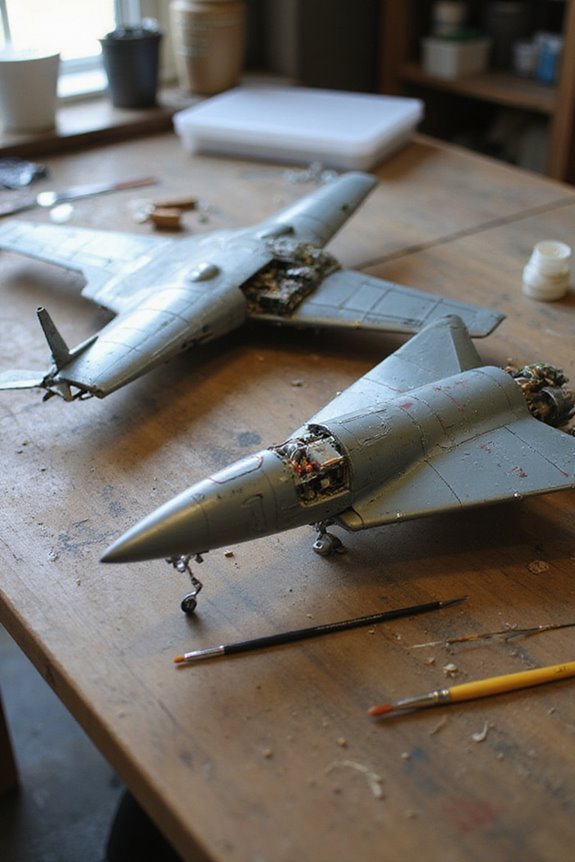
While both flying and static model aircraft take inspiration from real-world aviation, they diverge markedly in scale and detail. Static models often use popular scale ratios like 1:48 or 1:100, allowing for exquisite detailing techniques. Think of them as the high-definition version of an aircraft!
Flying models, on the other hand, prioritize flight over hyper-accuracy. They’re often larger, designed to manage structural integrity instead of mirroring exact dimensions. The intricate cockpit interiors and fine panel lines we’ve come to love in static models can become unnecessary weight in the air. Instead, we use lightweight materials like balsa and fiberglass to guarantee these beauties soar! All in all, each style embodies its own artistic spirit, whether resting proudly on a shelf or gliding through the sky. Additionally, many enthusiasts enjoy building detailed aircraft engine models that enhance their understanding of mechanics and aerodynamics.
Usage & Community
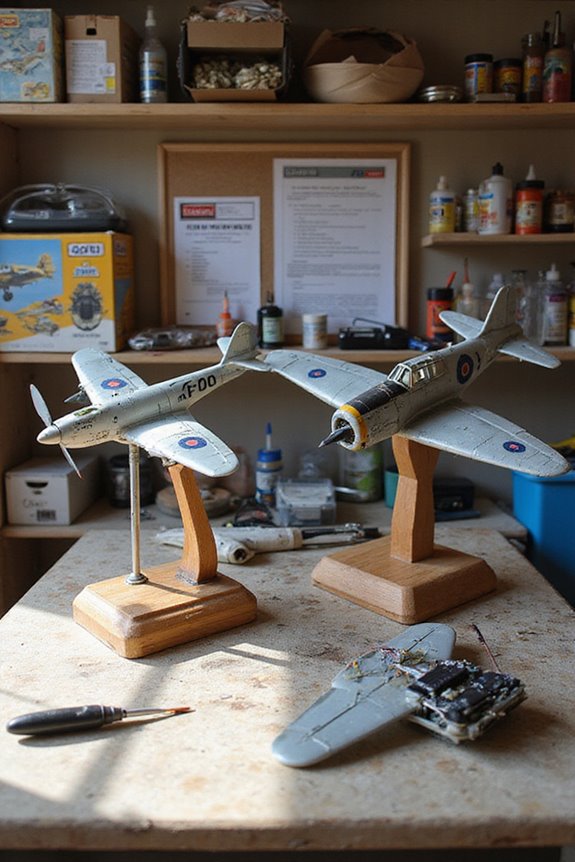
When it comes to model aircraft, the way we use them often shapes our community. Flying model enthusiasts thrive on community engagement through skills, competitions, and thrilling airshows. We’re not just showing off; we’re refining our piloting skills and enjoying the thrill of flight together!
On the flip side, static model aficionados gather around intricate displays, focusing on craftsmanship, historical accuracy, and preservation. Their workshops feel more like art studios!
Both communities ignite social interactions through online forums and local clubs. Whether we’re in the skies or at a display case, we’re sharing our passion. Plus, who doesn’t love a good debate over the best aircraft models? It’s all part of the fun! Additionally, many flying enthusiasts are drawn to the stability features that modern RC planes offer, enhancing their flying experience and skills.
Safety & Regulations
Safety isn’t just a buzzword; it’s the cornerstone of flying model aircraft operations. We all want to avoid a runaway plane crashing into Grandma at the picnic, right? That’s why we follow safety measures like complying with the AMA Safety Code. This includes keeping a visual line of sight and staying clear of spectators.
Regulatory compliance is key. Operators must adhere to national aviation laws, never fly above 1200 feet, and avoid attaching hazardous payloads. We also need pre-flight inspections; think of it as a pre-game pep talk for our aircraft.
Through these protocols and a strong focus on safety, we protect ourselves and everyone around us while enjoying this thrilling hobby!
Skill Sets & Techniques
After we’ve gone over safety and regulations, it’s time to get into the nitty-gritty of skills and techniques we need for flying and static model aircraft. Flying models require a solid grasp of aerodynamics, control inputs, and piloting skills, while static models focus on meticulous crafting techniques and detail accuracy.
For flying, we play with stability types and adjust our designs for effective flight. It’s a dance of weight, power, and aerodynamic forces. On the static side, precision in scale modeling and painting is essential—think of it as turning a block of wood into a museum piece. Each approach has its quirks, but both require practice and passion. So, whether you’re soaring or showcasing, there’s plenty to master! Additionally, understanding assembly complexity can greatly enhance your experience with building and customizing both types of models.
Commercial Market & Resources
As we immerse ourselves in the commercial market and resources for model aircraft, we discover a vibrant world buzzing with hobbyists and technology enthusiasts alike. The global model aircraft market is valued around USD 1.5 billion and is expected to grow to USD 2.8 billion by 2033. That’s a big leap, folks! Market trends show more tech-savvy hobbyists leaning towards electric-powered models, which now make up over 60% of sales. Industry players range from small manufacturers to large retailers all battling for our attention and dollars. The competition keeps innovations flowing like a well-oiled engine. Plus, the collaborative spirit among hobbyist communities helps drive growth, making it an exciting time to invest in our playful passion!
Frequently Asked Questions
Can Static Models Be Converted Into Flying Models?
While we’ve explored the idea of converting static models into flying ones, we face significant conversion challenges. Design considerations, such as structural integrity and aerodynamics, often make these transformations impractical for most models.
What Is the Average Cost Difference Between Flying and Static Models?
When we weigh our hobby investments, it’s clear: flying models often involve substantial costs due to power systems and repairs, while static models shine in affordability, offering satisfying cost comparisons for our creative pursuits.
Are There Age Restrictions for Flying Model Participants?
Yes, there’re age requirements for youth participation in model aircraft flying. Typically, operators must be at least 8 to 14 years old, often needing supervision or training to guarantee safety during their flying experiences.
How Long Does It Take to Build Each Type of Model?
Imagine the thrill of creation! Our assembly time for static models can be hours to weeks, while building techniques for flying models often stretch to months. Each project is a journey of patience and skill.
What Types of Tools Are Needed for Both Model Types?
When it comes to building techniques, we need various tools required for both static and flying models. From cutting tools and adhesives to display cases, the right tools guarantee our models are crafted and maintained properly.

